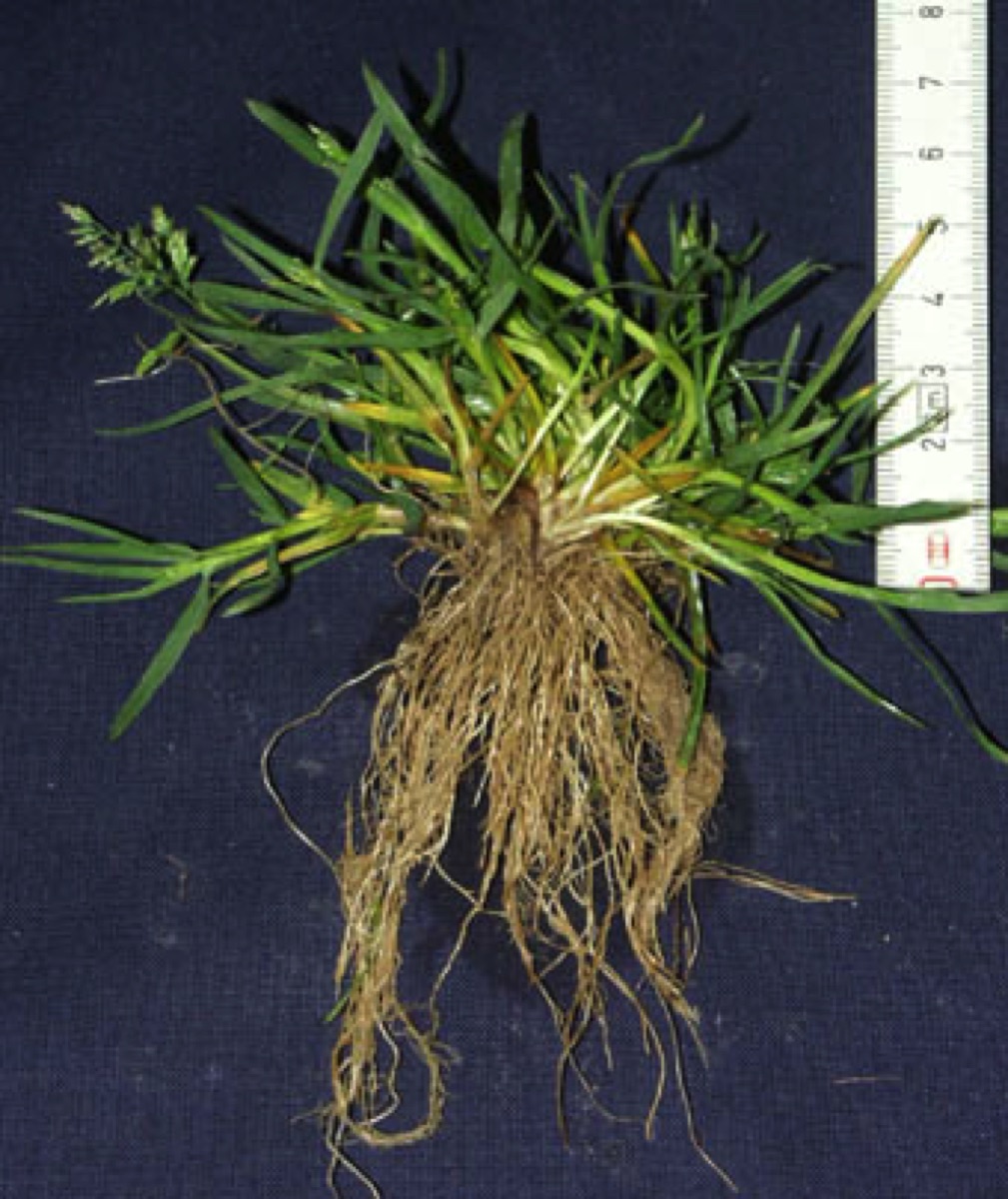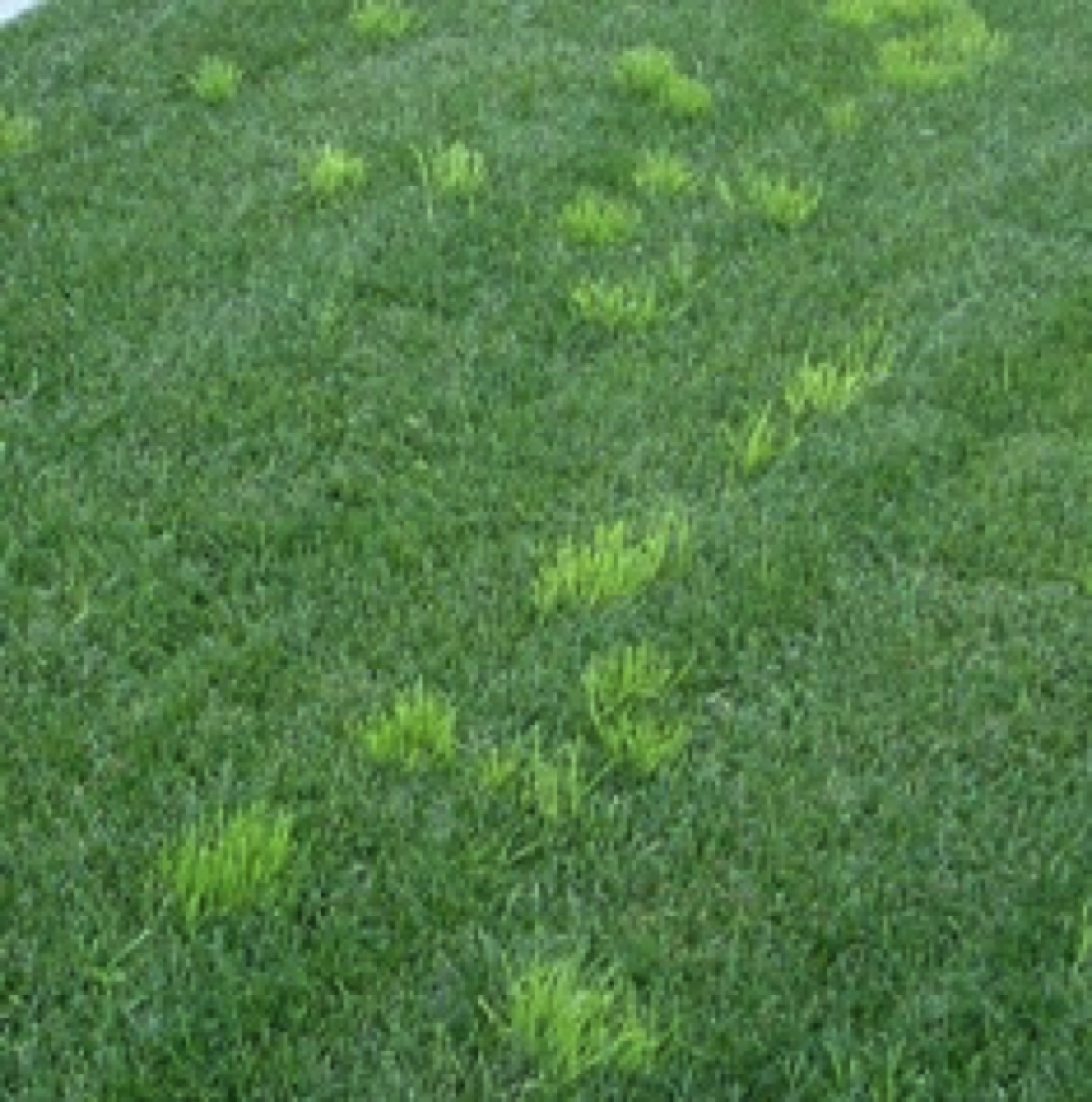- Categories:
- Maintenance
- Landscaping

With each plant being able to produce 100 seeds in as little as 8 weeks, poa annua can aggressively infest your turf before you know it.
Once a few plants become established in turf or ornamental areas, poa can spread rapidly and quickly lead to severe infestations. What's worse is that poa annua is often too much like the surrounding desired turf to remove without harming the rest of lawn.
This article focuses on how to identify poa annua, best practices for managing the weed, the lifecycle and environmental impact of the weed, and 18 recommended treatment options.
Identification:
Poa annua (annual bluegrass) is light green, with flattened stems and boat-shaped leaf tips. It's fairly weak, has a shallow root system, and grows well in moist areas with full sun. Poa also does well in semi-shaded conditions.
In moderate temperature areas where turf is frequently irrigated, poa annua can persist all year, but it usually dies out in the summer heat. It grows to a height of 6 to 8 inches if left un-mowed and has a flowering structure is 1 to 4 inches in length.
Life Cycle & Environmental Impact:
Poa annua starts germinating in late summer or early fall, as soil temperatures fall below 70° F.
A prolific seed producer, it will continue to germinate throughout winter with several flushes. Each plant can produce 100 seeds in as few as 8 weeks and poa can survive mowing heights of less than 1" and still reseed days after mowing.
In winter, poa annua is more competitive than many turfgrass species and severe infestations can develop as seeds are spread by mowing, foot traffic, birds, and cultivation. In the cool season, it grows faster than warm-season turf, which can give the lawn an andulating or irregular surface in as little as 2 days after mowing.
Best Practices for Managing Poa Annua
 Applying a pre-emergent herbicide is the most effective way to control poa annua and many other annual weeds. Pre-emergent creates a barrier BELOW the surface so sprouting seeds cannot push their way up.
Applying a pre-emergent herbicide is the most effective way to control poa annua and many other annual weeds. Pre-emergent creates a barrier BELOW the surface so sprouting seeds cannot push their way up.
Pre-emergent must be applied over an ENTIRE AREA to prevent seeds from germinating and herbicide MUST be applied BEFORE poa annua germinates to be effective. In many regions, the rule of thumb is to apply pre-emergent by September 15th, but time your application just prior to fall rains and when soil temperatures drop below 70º F.
Remember, pre-emergent does NOT control existing weeds and hand-weeding of poa is futile. New flushes of seedlings will only germinate after older ones are removed.
Selective post-emergent control is difficult – poa annua is too much LIKE the surrounding desired turf to remove without harming the rest of the lawn. Besides, there are more seeds just waiting to germinate, so post-emergent control would be constant.
In addition to properly using pre-emergent, there are a number of cultural practices that can help you avoid infestations:
- Do not over-fertilize; Phosphorus encourages seedling development.
- Do not overwater, especially in shady areas.
- Maintain healthy plants & overseed open spots, as dense plantings make establishment of seedlings difficult.
- Clean equipment before moving from infested to weed-free areas.
- Reduce soil compaction.
18 Recommended Treatment Options
Sprayable Formulations
1. PRODIAMINE 65WDG
- Longest-lasting
- Lowest application rates means most cost effective – A 5 lb jug treats up to 10 acres
- Non-Staining
- Barricade Equivalent
2. SURFLAN
- Popular for beds
- Not safe for cool-season turf
- Great tank-mix with Roundup for pre+post
- Orange in color
- 2.5 gallon jug treats 2.5 – 5 acres
3. TIP: Tank Mix with ISOXABEN DF (Gallery)
- Does NOT control Poa, but mixed w/ Surflan or Prodiamine, it will also prevent a large list of broadleaf weeds
- 1 lb jar treats 0.75 – 1.5 acres
Granular Formulations
1. OXADIAZON 2G
- Popular granular formulation
- Ronstar 2G Equivalent
- 50 lb bag covers 11,000 – 22,000 sq ft
2. DIMENSION .25G
- Best known for spring applications, to also control already-emerged crabgrass
- 40 lb bag covers 9,000 – 17,000 sq ft
3. T/I 2.5G (TRIFLURALIN/ISOXABEN)
- Controls more Grassy AND Broadleaf weeds than any other pre-emergent herbicide
- Snapshot Equivalent
- 50 lb bag covers 10,000 – 21,000 sq ft
PLUS FERTILIZER
TurfGro 12-4-16 w/ Barricade
- Excellent Fall Fertilizer formula plus pre-emergent weed control in 1 Step
- 20% Slow Release
- 50 lb bag covers 8,000 – 12,000 sq ft
SMALL PACKAGING
- ProDeuce – Prodiamine + Glyphosate for Pre + Post Control in 1 Step.
- Weed Impede – Small package Surflan
- Vegetable & Ornamental Weeder – Small Package Treflan
OTHER PRODUCT
- Oxadiazon 50 WSB
- Dithiopyr 40 WSB
- Pendulum (EC & Aquacap)
- OB 2G / XL 2G
- Treflan
- Casoron 4G
- Corn Gluten/Pre-Merge (Organic)
- TurfGro 15-3-5 w/ Dimension